The Ford Edge made its debut in 2007, entering the midsize SUV market as a stylish and capable crossover designed to appeal to a wide range of drivers. Positioned between the smaller Ford Escape and larger Explorer, the Edge offered car-like handling, ample passenger and cargo space, and a variety of trim levels to suit different lifestyles. Over the years, it evolved in response to changing consumer needs, integrating advanced technology, more powerful and fuel-efficient engine options, and improved safety systems. In 2023, after 17 years of production, the Ford Edge was discontinued as part of Ford’s broader strategy to pivot toward electric vehicles (EVs) and future mobility solutions.
This article will take you through its journey from the first generation to its final production year in 2023, highlighting key aspects of each model along the way.
Key Takeaways:
- The Ford Edge debuted in 2007 as a midsize SUV and remained in production until 2023.
- The most reliable models are from 2016 to 2018, with 2016 often considered the best year overall.
- Years to avoid include 2009–2010, 2011–2013, and 2017 due to frequent mechanical and electrical issues.
- The 2019–2023 models introduced modern tech features, including Apple CarPlay, Android Auto, and advanced safety systems.
- The Ford Edge ST debuted in 2019 as a high-performance trim with a powerful twin-turbo V6.
- Ford discontinued the Edge after the 2023 model year to focus on electric vehicles and future-forward platforms.
Reflecting on the Ford Edge’s Legacy
From its introduction, the Ford Edge aimed to blend comfort, utility, and a touch of style. It quickly became a popular choice for families and individuals alike. The Ford Edge offered a compelling alternative to larger, truck-based SUVs, providing a more manageable size and better fuel economy without sacrificing passenger and cargo space.
Here’s what made the Edge stand out over the years:
- A spacious interior with flexible cargo solutions
- Available all-wheel drive for enhanced traction and control
- A range of engine options to suit different driving preferences
- Ongoing updates to safety, infotainment, and performance features
Over the years, the Ford Edge SUV has seen several updates and redesigns, each aimed at improving its performance, safety, and technology. Its legacy is one of a versatile and reliable vehicle that met the needs of a broad spectrum of drivers.
The Ford Edge Timeline: From Debut to Farewell
The Ford Edge carved out its place in the midsize SUV market with a solid run from 2007 through 2023. That’s a pretty good stretch for any vehicle! For over a decade and a half, it was a consistent choice for families and individuals looking for a reliable crossover.
I remember when the Edge first came out; it was a big deal. Everyone was talking about it. It’s kind of sad to see it go, but things change, right? Here’s a quick breakdown of some milestone years:
- 2007: The year it all began
- 2015: A major redesign introduced a sleeker look and better tech
- 2023: The final year of production, ending an impressive 17-year run
Why Was the Ford Edge Discontinued?
Ford’s move toward electric vehicles played a major role in the Edge’s discontinuation. As the automotive industry shifts toward EVs and sustainability, automakers are making tough decisions to reposition their lineups. The Edge simply didn’t make the cut. Here are a few reasons why Ford made this choice:
- Increased investment in EV production and innovation
- Changing consumer preferences toward smaller crossovers and electric models
- The retooling of the Oakville Assembly Plant in Ontario, Canada, to build EVs
It’s a bummer for fans of the Edge Sport and Edge SEL, but it opens the door for new innovations. While the Ford Edge EcoBoost and other trims are no longer being produced, their legacy remains strong. The Ford Edge 2020 and other recent models will be remembered fondly by many.
First Generation (2007–2014): Ford’s Bold Entry into the Crossover Market
Design & Features
- Stylish exterior with a prominent grille and aerodynamic lines
- Interior prioritized comfort with wide seating and ample cargo space
- Technology was basic by today’s standards but competitive at the time
The first-generation Ford Edge was introduced in 2007 and ran through the 2014 model year. Built on Ford’s CD3 platform, which it shared with the Ford Fusion and Lincoln MKX, the Edge marked Ford’s commitment to building a true crossover utility vehicle (CUV) that blended the spaciousness of an SUV with the ride quality of a sedan. Its bold styling, featuring a large chrome grille, sleek curves, and a wide stance, appealed to drivers who wanted a more modern and athletic-looking vehicle than traditional boxy SUVs.
Inside, the Edge offered a comfortable and spacious cabin with two rows of seating for five passengers. Features like reclining rear seats, a flat load floor, and a quiet ride helped make it a popular family vehicle. Available trims included SE, SEL, and Limited, with higher trims offering premium upgrades like leather upholstery, a panoramic vista sunroof, and dual-zone climate control.
Engine Options
- 3.5L V6 engine with 265 horsepower
- 6-speed automatic transmission
- Average fuel economy: 17 city / 24 highway MPG
Under the hood, all first-generation Ford Edge models came standard with a 3.5-liter V6 engine that produced 265 horsepower and 250 lb-ft of torque, paired with a 6-speed automatic transmission. Front-wheel drive was standard, while all-wheel drive was optional. The engine delivered adequate power for daily driving, but fuel economy was average for the segment, ranging from 16–18 MPG in the city and 23–25 MPG on the highway.
Reliability & Common Issues
- 2009–2010: Rusting fuel tanks, seam weld leaks
- 2011–2013: Electrical issues, faulty door ajar sensors, power steering problems
- Clicking sounds from the wheel area were common from 2007 to 2014
Although the Edge was praised for its styling and comfort, the first generation faced several reliability concerns. Models from 2009 and 2010 were frequently reported to have fuel tank rust and seam weld issues, leading to leaks and safety concerns. Between 2011 and 2013, owners complained of electrical problems, steering issues, and an especially persistent problem with the door ajar light remaining on even when all doors were securely closed. This seemingly minor glitch often led to battery drain and frustration among owners.
From 2007 to 2014, many Edge models were also reported to have issues with the ABS system, transmission hesitations, and wheel area clicking noises. Despite these issues, the first-generation Edge laid the groundwork for the vehicle’s future success and established it as a legitimate competitor in the midsize crossover segment.
Second Generation (2015–2018): A Major Redesign & Reliability Leap
Updated Design & Interior Refinement
The 2015 model year brought a complete redesign to the Edge. Ford asked, “How can we improve everything?” and delivered a more upscale, tech-friendly SUV. Built on a global platform, the updated Edge featured a more modern appearance, improved aerodynamics, and a sleeker front fascia. The interior received major improvements in materials quality, layout, and space utilization. The rear seats were now easier to fold flat, and overall noise insulation was significantly improved.
Available trims included SE, SEL, Titanium, and the newly introduced Sport trim. Features like heated and ventilated front seats, a hands-free power liftgate, and a large panoramic sunroof helped elevate the Edge into a more premium category. Advanced tech offerings like SYNC 3, voice-activated navigation, and a suite of driver-assist technologies began to appear as well.
What Improved?
- Smoother, more modern exterior styling
- Premium interior materials and better infotainment
- Advanced driver-assist features became available
Engine Lineup & Driving Dynamics
The second generation introduced three engine options:
- 2.0L EcoBoost I4: A turbocharged inline-4 offering 245 horsepower and improved fuel economy
- 3.5L V6: Naturally aspirated engine producing 280 horsepower, suited for drivers prioritizing traditional power
- 2.7L EcoBoost V6 (Sport trim): A twin-turbo engine delivering 315 horsepower and strong torque for a performance-focused drive
All engines were paired with a 6-speed automatic transmission, and both front-wheel and all-wheel drive configurations were available. The 2.0L EcoBoost was especially appealing for buyers looking to save on fuel without sacrificing too much power.
Most Reliable Years & Notable Issues
The 2016 Ford Edge is widely considered the most reliable model year across the lineup. Owners reported fewer complaints related to engine performance, transmission, and tech malfunctions. The 2017 and 2018 models continued this trend, with incremental improvements in infotainment systems and safety tech.
That said, earlier models in this generation—particularly 2015—experienced issues with water leaks from the panoramic sunroof and malfunctions in the adaptive steering system. Additionally, some units in the 2016 and 2017 models were affected by airbag recalls due to potential deployment failures. Nonetheless, by 2018, Ford had ironed out many of these issues, and the Edge stood as one of the most well-rounded crossovers in its class.
Third Generation (2019–2023): Tech-Focused Refinement & the Edge ST Debut
Exterior & Interior Updates
- Bolder grille, updated lighting, and fresh wheel options
- Standard SYNC 3 infotainment with Apple CarPlay and Android Auto
- Ford Co-Pilot360™ added a full suite of safety tech
For the 2019 model year, the Ford Edge underwent a significant mid-cycle refresh rather than a full redesign. The most noticeable changes were cosmetic—a redesigned front grille, new LED headlights and taillights, and updated wheel designs. Inside, the cabin saw enhancements to its layout and materials, along with an improved infotainment experience.
SYNC 3 became standard, featuring an intuitive 8-inch touchscreen with Apple CarPlay and Android Auto compatibility. The Edge also introduced Ford Co-Pilot360™, a suite of standard safety features that included automatic emergency braking, lane-keeping assist, blind spot monitoring, and rear cross-traffic alert. Trims during this generation included SE, SEL, Titanium, and the new high-performance ST model.
The Edge ST: A Performance Crossover
Replacing the previous Sport trim, the Ford Edge ST launched in 2019 as the brand’s first performance SUV under the Ford Performance badge. Powered by a 2.7L twin-turbocharged EcoBoost V6 producing 335 horsepower and 380 lb-ft of torque, the Edge ST delivered sporty acceleration and engaging handling. It also featured a sport-tuned suspension, available performance brakes, and unique styling elements that distinguished it from other trims.
With the 8-speed automatic transmission and standard AWD, the Edge ST became a standout option for drivers seeking more excitement from a midsize SUV without sacrificing everyday usability.
- All-wheel drive
- Sport-tuned suspension and steering
- Performance brakes and unique ST styling
Safety & Reliability
The 2019–2023 Edge models benefited from the latest tech and safety systems Ford had to offer. In addition to Co-Pilot360™, buyers could opt for features like adaptive cruise control with stop-and-go, evasive steering assist, and enhanced park assist. These models also included available 12-inch digital instrument clusters in later years.
The final years of production, especially 2021 through 2023, were known for reliability and minimal recalls. Routine complaints were limited to minor infotainment glitches and occasional brake noise, making these some of the most well-rounded Edge models available.
- Reliability remained high from 2020 to 2023
- Infotainment systems improved, with some models getting 12-inch screens
- Complaints were minimal, mostly related to brake noise or tech bugs
Most Reliable Ford Edge Model Years
If you’re shopping for a used Ford Edge, the 2016–2018 models are widely regarded as some of the best years. Among them, the 2016 model stands out as the most reliable. These vehicles tend to have fewer mechanical complaints, offer well-rounded performance, and include updated safety and infotainment systems without the issues that plagued earlier generations.
- 2016: Reliable, well-rounded, and widely recommended
- 2017–2018: Continued strength in performance and dependability
- 2020–2023: Tech-forward, safe, and stylish options
Ford Edge Years to Avoid
While many Edge models are dependable, a few years are best avoided. The 2009–2010 models suffered from serious fuel tank issues, while the 2011–2013 vehicles experienced widespread electrical and steering problems. Owners also reported frustration with malfunctioning door sensors and dashboard warning lights. The 2017 model year, in particular, has drawn criticism for its reliability—even ranking worse than older 2013 models, despite improvements in design.
- 2009–2010: Fuel system issues, including rust and leakage
- 2011–2013: Electrical malfunctions, steering concerns, door ajar light errors
- 2015: Early redesign bugs, including leaking roofs
- 2017: Ranked poorly for reliability versus prior years
Performance & Engine Options Over the Years
Throughout its production, the Ford Edge offered a variety of engines tailored to different driving needs. Early models featured a 3.5L V6, while the second generation introduced the 2.0L EcoBoost for better fuel efficiency without sacrificing power. The ST trim, launched in 2019, offered the most thrilling drive with its 335-horsepower twin-turbo V6 engine. Transmission technology also evolved—from the original six-speed automatic to the more responsive eight-speed introduced in later years.
First Gen (2007–2014)
- 3.5L V6
- Average performance and smooth shifts, but not sporty
Second Gen (2015–2018)
- Introduction of turbocharged 2.0L EcoBoost
- V6 and twin-turbo options for more power or fuel savings
Third Gen (2019–2023)
- 2.0L EcoBoost standard
- 2.7L ST model for performance lovers
- New 8-speed automatic for smoother, more efficient driving
Interior, Tech, & Safety Feature Updates
The Edge kept pace with consumer tech demands by upgrading its infotainment and safety features over time. Earlier models had basic audio systems and limited connectivity, while later versions (2019–2023) came standard with SYNC 3, Apple CarPlay, and Android Auto. Safety also improved with the addition of Ford Co-Pilot360™, offering features like lane-keeping assist, blind-spot monitoring, and adaptive cruise control. These enhancements made the Edge a well-rounded choice for families and commuters alike.
Trim Levels & Feature Availability
Over the years, the Edge was offered in several trims:
- SE: Entry-level with basic essentials
- SEL: Mid-tier with tech and comfort upgrades
- Titanium: Luxury touches like leather seats and premium sound
- Sport/ST: Performance-oriented, high-output engines and aggressive styling
Depending on the year, you could also find options like remote start, panoramic roofs, premium sound systems, and full LED lighting.
Buying a Used Ford Edge: Quick Tips
If you’re eyeing a used Edge, here are some things to keep in mind:
- Prioritize model years 2016–2018 or 2020–2023
- Look for certified pre-owned models with warranty coverage
- Always inspect the roof seals and check for any recalls
- AWD models offer better handling in winter climates
- SYNC 3 is worth holding out for in terms of ease-of-use and connectivity
The End of the Road For the Ford Edge
The Ford Edge enjoyed a remarkable run. It wasn’t the flashiest or the fastest, but it consistently delivered on what midsize SUV buyers wanted—comfort, performance, safety, and style. It adapted over time, gave us the sporty Edge ST, and stood strong until its final model year.
Its departure marks the end of an era, but the Edge’s legacy is far from over. If you’re in the market for a used Edge, focus on models from 2016 to 2018 for the best experience—and steer clear of earlier years plagued by mechanical issues. As Ford transitions to an electric future, the Edge remains a strong example of how traditional SUVs can balance practicality with performance.
Stay tuned—who knows what the next chapter of Ford’s SUV evolution will bring?
What is the history of the Ford Edge?
The Ford Edge is a midsize SUV that started production in 2007 and quickly became popular for its safety and comfort.
When was the Ford Edge produced?
The Ford Edge was produced from 2007 until 2023.
Why is the Ford Edge being discontinued?
Ford is shifting its focus to electric vehicles, which led to the decision to discontinue the Edge after 2023.
What were the key features of the first generation of Ford Edge?
The first generation, from 2007 to 2014, had a focus on safety and comfort, making it a great choice for families.
What changes were made in the second generation of the Ford Edge?
The second generation, starting in 2015, featured a major redesign and improved reliability.
What updates were made to the Ford Edge in its final years?
From 2019 to 2023, the Edge saw updates like the introduction of the Ford Edge ST and new styling.
Which years of the Ford Edge are considered the most reliable?
The 2016 model year is often highlighted as the most reliable, with 2016 to 2018 receiving praise for consistent performance.
What Ford Edge models should I avoid?
It’s best to avoid the 2009-2010 and 2011-2013 models due to various issues including fuel tank problems and electrical issues.


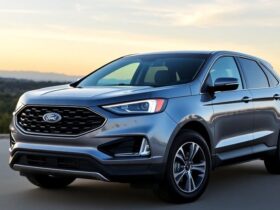

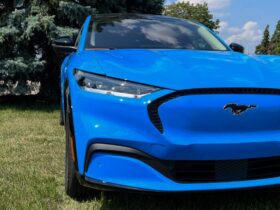
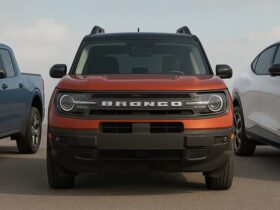
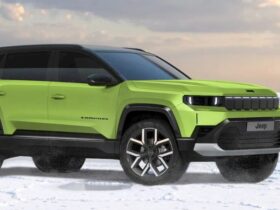


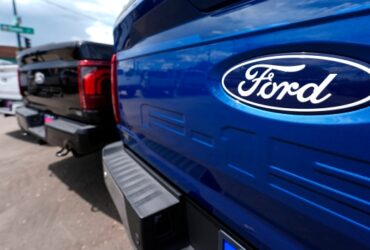

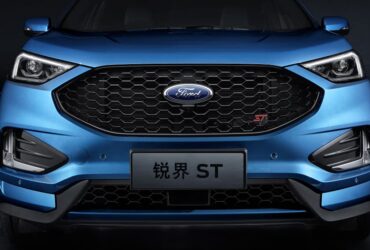
Leave a Reply